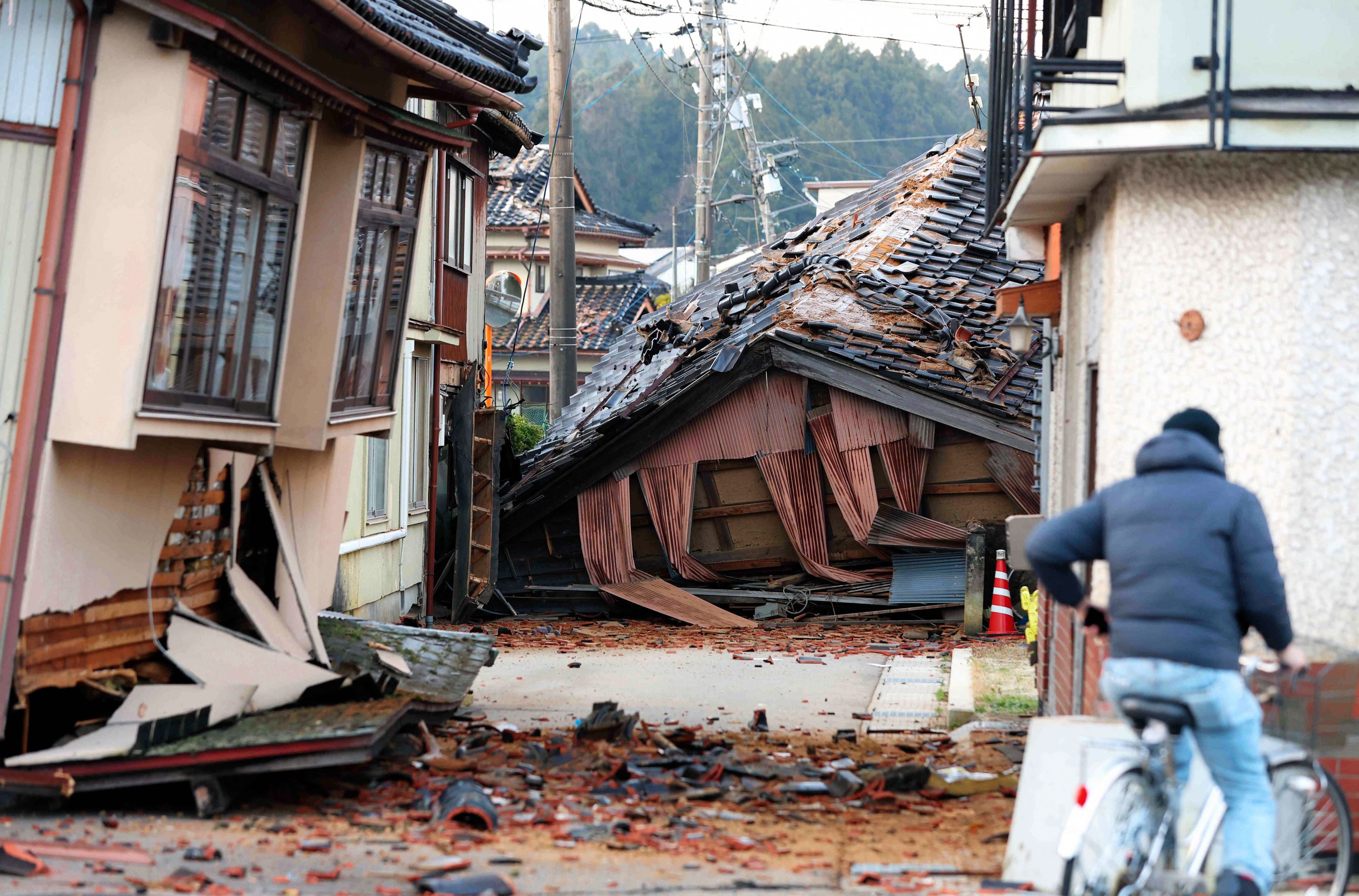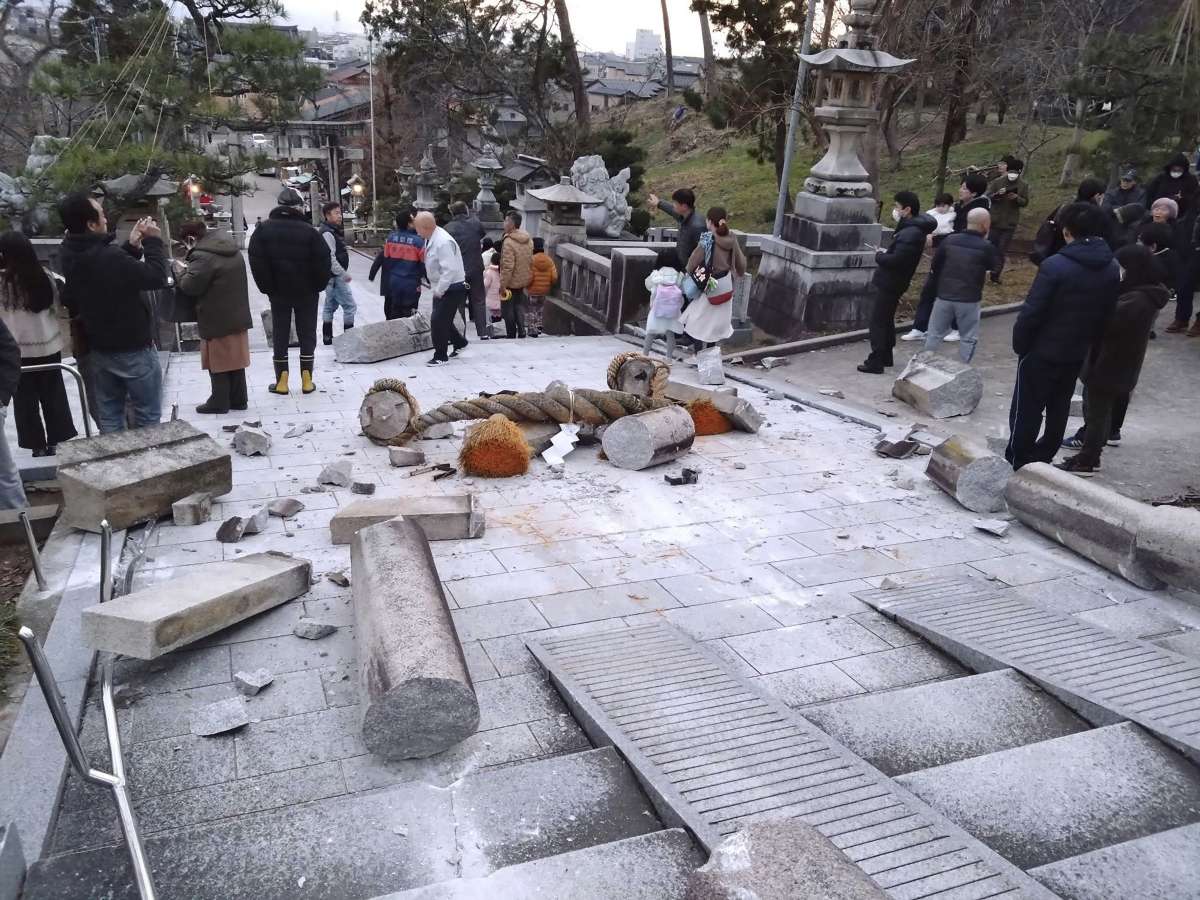Japan’s Earthquake and Tsunami Risk: Japan Earthquake Tsunami Warning

Japan, an archipelago nation nestled in the volatile Ring of Fire, faces a constant threat from earthquakes and tsunamis. This geological reality has shaped Japan’s history, culture, and its approach to disaster preparedness.
Geological Factors Contributing to Japan’s Vulnerability, Japan earthquake tsunami warning
Japan’s location at the convergence of four tectonic plates – the Pacific, Eurasian, North American, and Philippine Sea plates – makes it highly susceptible to earthquakes. The constant movement and interaction of these plates generate immense pressure, leading to frequent seismic activity. The Pacific Plate, which subducts beneath the Eurasian Plate, is particularly active, resulting in a chain of volcanic arcs and deep ocean trenches along Japan’s coastline. This subduction zone is responsible for some of the most powerful earthquakes in history, including the devastating 2011 Tohoku earthquake.
Historical Significance of Major Earthquakes and Tsunamis
Japan has a long and tragic history of earthquakes and tsunamis. Some of the most significant events include:
- The 1703 Genroku earthquake and tsunami, which devastated the Kanto region, causing widespread damage and a significant loss of life.
- The 1923 Great Kanto earthquake, one of the deadliest earthquakes in history, claimed over 100,000 lives and triggered a massive fire that ravaged Tokyo.
- The 2011 Tohoku earthquake and tsunami, a magnitude 9.0 earthquake that triggered a devastating tsunami, causing widespread destruction and a nuclear disaster at the Fukushima Daiichi power plant.
Japan’s Earthquake and Tsunami Warning Systems
Japan has developed a sophisticated network of earthquake and tsunami warning systems to mitigate the impact of these natural disasters. These systems rely on a combination of advanced technology and a robust infrastructure.
- Earthquake Early Warning System (EEW): This system detects the initial seismic waves of an earthquake and sends out alerts to the public and critical infrastructure, providing precious seconds to prepare for the shaking. The EEW system is highly effective in alerting people before the strongest shaking arrives, allowing them to take cover and reduce injuries.
- Tsunami Warning System: This system uses a network of buoys and sensors deployed in the Pacific Ocean to detect changes in sea level caused by an earthquake. When a tsunami is detected, warnings are issued through various channels, including television, radio, and mobile phones, alerting coastal communities to evacuate to higher ground.
Japan’s Preparedness Measures
Japan has implemented a comprehensive approach to disaster preparedness, encompassing a wide range of measures. These measures include:
- Building Codes: Japan has strict building codes that require structures to be earthquake-resistant, incorporating features such as flexible joints and reinforced concrete. These codes have significantly reduced the damage and loss of life from earthquakes.
- Disaster Drills and Education: Regular disaster drills and education programs are conducted in schools, workplaces, and communities to familiarize people with earthquake and tsunami safety procedures. These drills help people to react quickly and effectively in an emergency.
- Emergency Response System: Japan has a well-organized emergency response system, with trained volunteers and professionals ready to provide immediate assistance after a disaster. This system includes search and rescue teams, medical personnel, and disaster relief organizations.
International Cooperation and Response

In the face of catastrophic earthquakes and tsunamis, Japan’s resilience is often bolstered by a global network of support. International organizations and governments play a crucial role in providing aid, expertise, and collaboration in the aftermath of these devastating events.
International Aid and Support
The international community has consistently demonstrated its solidarity with Japan following major disasters. The 2011 Tohoku earthquake and tsunami, one of the most powerful in recorded history, triggered an outpouring of global assistance.
- Financial Aid: Countries and international organizations like the World Bank and the Asian Development Bank provided substantial financial aid to support Japan’s recovery efforts. This aid helped fund reconstruction projects, provide relief to affected communities, and rebuild critical infrastructure.
- Humanitarian Assistance: Search and rescue teams, medical personnel, and humanitarian organizations from around the world rushed to Japan to provide immediate assistance. These teams helped locate survivors, provide medical care, and distribute essential supplies.
- Technical Expertise: International experts in disaster management, engineering, and infrastructure reconstruction were deployed to Japan to share their knowledge and assist with rebuilding efforts. This expertise played a vital role in ensuring that reconstruction projects were resilient and safe.
Effectiveness of International Collaboration
International collaboration has proven to be an essential component of Japan’s disaster response and recovery. The coordinated efforts of international organizations, governments, and NGOs have facilitated efficient and effective aid delivery, resource allocation, and long-term recovery planning.
- Improved Coordination: International collaboration has fostered better coordination among various actors involved in disaster response. This has helped to avoid duplication of efforts and ensure that resources are allocated effectively.
- Sharing of Best Practices: The exchange of knowledge and best practices among countries has led to improvements in disaster preparedness and response strategies. This includes sharing lessons learned from previous disasters and developing more effective early warning systems.
- Strengthening of Partnerships: International collaboration has fostered strong partnerships between Japan and other countries, enabling the sharing of resources and expertise in the long term. This has built a network of support that can be leveraged in future disaster events.
Comparison with Other Countries
Japan’s response to earthquakes and tsunamis is often compared to other countries prone to similar disasters. While there are similarities in the challenges faced, there are also distinct differences in the approaches taken.
- Strong National Preparedness: Japan has a highly developed disaster preparedness system, with regular drills and public awareness campaigns. This has contributed to a higher level of preparedness and resilience among the population compared to some other countries.
- Advanced Infrastructure: Japan has invested heavily in earthquake-resistant infrastructure, including buildings, bridges, and transportation systems. This has significantly reduced the damage and casualties caused by earthquakes and tsunamis.
- Cultural Acceptance of Risk: Japanese society has a strong cultural understanding of the risks associated with earthquakes and tsunamis. This acceptance of risk has led to a higher level of public cooperation and participation in disaster preparedness efforts.
Japan earthquake tsunami warning – Japan’s earthquake and tsunami warnings are a stark reminder of the power of nature. While the country prepares for potential disasters, athletes around the world are training for the climbing olympics 2024 in Paris. This global sporting event highlights human resilience and athleticism, a stark contrast to the destructive force of natural disasters.
However, both events showcase the importance of preparation and adaptability in the face of challenges, whether they be physical or environmental.
Japan’s earthquake and tsunami warning system is a testament to the country’s preparedness for natural disasters. The system relies on a network of sensors and sophisticated technology to detect seismic activity and issue alerts to the public. While these systems are designed to minimize the impact of such events, they also highlight the importance of resilience in the face of adversity, a trait that is also evident in the climbing olympics 2024.
The climbing community’s unwavering determination and ability to overcome challenges in the face of extreme conditions are a testament to the human spirit’s capacity for adaptation and resilience, just like the people of Japan who have demonstrated remarkable strength in the wake of natural disasters.